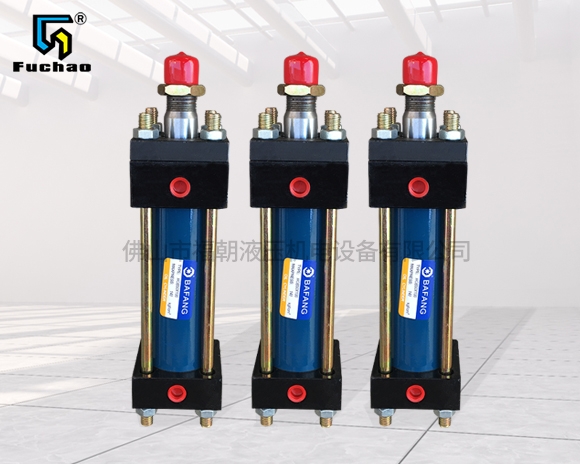Hydraulic system An actuator in. Generally, it is composed of cylinder block, cylinder rod (piston rod) and seals. The internal part of the cylinder block is divided into two parts by the piston, which respectively pass through an oil hole.
Since the compression ratio of the liquid is very small, when oil is fed into one of the oil holes, the piston will be pushed to make the other oil hole discharge oil, and the piston will drive the piston rod to extend (retract), and vice versa.
Let's start with its basic five components: 1 - cylinder barrel and cylinder head 2 - piston and piston rod 3 - sealing device 4 - buffer device 5 - exhaust device.
The working principle of each type of cylinder is almost similar. Take a manual jack for example, the jack is actually a simple cylinder. The hydraulic oil enters the oil cylinder through a single valve through the manual pressure increasing rod (hydraulic manual pump). At this time, the hydraulic oil entering the oil cylinder cannot reverse due to the single valve, forcing the cylinder rod upward, and then the work continues to make the hydraulic oil continuously enter Hydraulic cylinder In this way, it keeps rising. When it is time to lower, open the hydraulic valve to return the hydraulic oil to the oil tank. This is the simplest working principle, and others are improved on this basis.

Advantages and disadvantages of oil cylinder and air cylinder
1 -- Since the operating pressure of the pneumatic system is generally within the range of 0.2-1.0Mpa, the cylinder cannot be used as a high-power power component. The hydraulic cylinder can be used as a component with relatively high power, and the hydraulic system can be used;
2 - From the perspective of medium, air is inexhaustible, without cost and supply difficulties. The used gas is directly discharged into the atmosphere, which is convenient for treatment and will not pollute, while hydraulic oil is the opposite;
3 - With low air viscosity, the resistance is less than that of hydraulic oil;
4 -- But the compression rate of air is much higher than that of hydraulic oil, so its stability and response are far from good.
The hydraulic cylinder is an important actuating element in the hydraulic system. It converts hydraulic energy into mechanical energy, and cooperates with various transmission mechanisms to complete various mechanical movements. The hydraulic cylinder has the characteristics of simple structure, large output force, stable and reliable performance, convenient use and maintenance, and wide application range.



